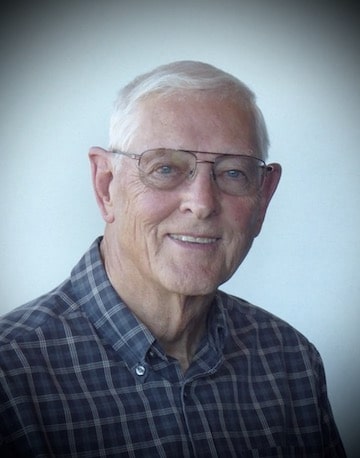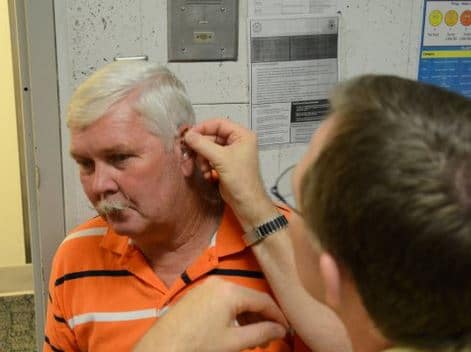What Would be a Preferred Hearing Aid Performance?
Would a consumer select the same hearing aid performance as was recommended by an audiologist if given a choice among different signal processing schemes?
Results show that there is not agreement, at least for four different hearing aid algorithms (different hearing aid operating systems) as reported in this study. This post will provide results of consumer preference comparisons from two countries for the same study, the preferred algorithms in different listening environments, speech intelligibility in noise with their preferred algorithms, and SNR intelligibility comparisons among the provided algorithms.
Country Comparisons
Would the results be similar to those found in the U.S. if conducted with subjects in a different country – in this case, the Netherlands? Individual algorithm preferences in the Netherlands showed the same inconsistency between the subject algorithm preferences versus those recommended by a group of audiologists. Because individual algorithm preferences in the Netherlands showed the same inconsistency between audiologists’ recommendations and subject preferences, they will not be duplicated here. Instead, a few graphs have been selected to provide additional information not measured in the U.S. study.

Figure 1. Signal processing algorithm rank order preference differences between subjects from The Netherlands and the United States, for the same study.
Subject algorithm preferences between the two countries for first and second rank order are shown in Figure 1. The Clarity algorithm was ranked highest for first and second choice by subjects in The Netherlands. In the U.S., the Comfort and Clarity algorithms were rank ordered the same, with both being the preferred algorithms. The Comfort algorithm showed the greatest difference between the two countries. There seems to be no logical explanation for this. In general, the results show that there appears to be little consistency in how subjects rank order the algorithms they prefer, regardless of country.
Preferred Algorithm in Different Listening Environments
Subjects were asked to rank order their algorithm preferences when listening in the following common environments in The Netherlands study: quiet, party, car, street, and music (Figure 2). The Clarity algorithm was the clear winner, ranking first or tied for first in every listening environment other than music. This was followed closely by the Equalizer algorithm.

Figure 2. Subjects’ preferred algorithms (rank ordered 1 and 2) when listening in the environments identified, and when allowed to adjust between the four different algorithms used in this study.
Speech Intelligibility in Noise with Preferred Algorithm

Figure 3. Speech intelligibility (SNR) when listening in noise. Each 1-dB improvement translates to a 9.6% intelligibility score increase.
The results of speech intelligibility, as expressed in signal noise ratio (SNR) when listening in noise, is shown in Figure 3 for the subjects’ preferred listening algorithm. The graph shows the overall score for all fifteen subjects, for those having a pure-tone audiogram less than 45 dB, for those having a pure-tone average greater than 45 dB, and a comparison to their past hearing aid. The algorithm subjects preferred provided improved listening in noise when compared with their current hearing aid, regardless of the hearing levels as expressed by the pure-tone average (PTA).
SNR Intelligibility Improvement by Algorithm

Figure 4. Average SNR (signal noise ratio) improvement for each of the algorithms when all subjects are measured on each algorithm.
Do each of the algorithms provide equal SNR improvement when compared with each other? Figure 4 showed the SNR improvement with subjects when tested across all algorithms. It shows that the Clarity algorithm provided the best SNR improvement, with the Comfort algorithm showing the least SNR improvement. So, for the algorithms under investigation, it appears that the algorithms do not provide equal SNR improvement.
Summary
Experienced hearing aid wearers were provided with an open platform system in which they were allowed to move back and forth and select between four different but common algorithms (meaning four different hearing aid operational characteristics). These algorithms, (Fidelity, Clarity, Comfort, and Equalizer) are not to be confused with selecting among different listening environments (Quiet, Noise, Music, Restaurant, etc.), which is a common feature in current hearing aids. In essence, each algorithm is essentially a different hearing aid. The study purpose was to determine if the algorithm recommended by an audiologist would be the same as what the consumer would prefer following a two-month period during which subjects wore this system (BTE hearing aid and remote algorithm selector). Results showed that there was essentially no agreement.
The investigation results provide lingering questions about hearing aid selection – what do we really know about hearing aid selection? Overall, results from this study show:
- Similar hearing thresholds are not satisfied by the same hearing aid signal processing scheme,
- Appropriate hearing aid circuitry is not as accurately predicted as one might be led to believe,
- Signal processing preferences by hearing aid users change over time,
- Patients/clients/consumers’ signal processing preferences bear little resemblance to recommendations made by audiologists,
- Patients/clients/consumers are interested in participating in their hearing aid selection.
*This article was originally published at Wayne’s World on November 10, 2015. Title image courtesy USAR
 Wayne Staab, PhD, is an internationally recognized authority on hearing aids. His professional career has included University teaching, hearing clinic work, hearing aid company management and sales, and extensive work with engineering in developing and bringing new technology and products to the discipline of hearing. Dr. Staab is the Founding Editor of Wayne’s World and served as the Editor-In-Chief of HHTM from 2015 to 2017.
Wayne Staab, PhD, is an internationally recognized authority on hearing aids. His professional career has included University teaching, hearing clinic work, hearing aid company management and sales, and extensive work with engineering in developing and bringing new technology and products to the discipline of hearing. Dr. Staab is the Founding Editor of Wayne’s World and served as the Editor-In-Chief of HHTM from 2015 to 2017.








Dear Dr. Staab,
We all must know that hearing is a subjective experience, unlike vision which is a more direct experience and gives little time for reactions. Listening is a brain processing feature, and leads to abstract forms of thinking and deductions. What should clarity imply? It should be the desire to get more information out of the inputs, and allow more objective, quicker analytical thinking.
People with better vision have a better world perspective, and will seek comfort in hearing (not listening). Both are desirable characteristics, but they are sought psychologically, whether one wears hearing aids or not. So the preferences stem from life’s desires and wants and have little to do with hearing aid performances.. Speech is coded expression in communication, and once a specific language is embedded in our long term memory, all we need is cues when the speech sounds are distorted, or when unnatural accents (pidgin English), are heard.Such cues are developed after many years of hearing aid use, where synaptic functions develop short cuts to stay with the flow of communication. Again, the hearing aid output, remaining constant will provide help regardless of clarity. The key factor is the desire to either hear, or listen for the indoor enthusiast, or the the outdoor thinker. There is a tendency to “highlight” HA characteristics when in reality the brain does all of the work. I submit that in very noisy artificial environment. HA performance needs to be augmented with wireless transmissions which actually only bring the output closer to the ear drums and improve signal to noise ratios. In such cases comfort becomes necessary, and not clarity. Nice research Wayne!